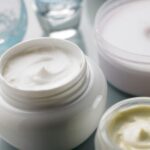In every modern dental practice, the day-to-day workflow is built not only on clinical expertise and patient communication, but also on the reliable availability of materials that support the delivery of care. Among these, dental consumables form the backbone of nearly every diagnostic, preventive, and restorative procedure.
Though often considered routine, these materials carry significant clinical implications—from infection control to procedural precision—and their consistent availability is essential to maintaining a standard of care that reflects both competence and efficiency.
Menu list
Defining Dental Consumables in Clinical Context
Dental consumables refer to items and materials that are used either once or over a limited number of procedures, after which they are disposed of or replenished. Unlike capital equipment, these materials are not intended for long-term use but are vital in supporting ongoing treatment across multiple disciplines.
This category includes, but is not limited to:
- Restorative materials (composites, etchants, bonding agents)
- Impression materials and bite registration compounds
- Local anesthetics and delivery systems
- Infection control products (barriers, gloves, sterilization wraps)
- Preventive items such as fluoride varnishes, sealants, and prophy pastes
Consumables are indispensable not only from an operational standpoint but from a regulatory and clinical safety perspective as well.
Daily Relevance to Practice Management
Dentists who operate their own clinics are acutely aware of how critical material reliability is to both patient satisfaction and staff workflow. Poor material performance can result in procedural delays, remakes, or even compromised outcomes. In contrast, consistency in product quality contributes to predictable results, higher treatment acceptance, and improved time management.
Each clinical discipline relies on its own suite of materials. A restorative dentist, for example, may use a matrix system, etchant, adhesive, and composite resin—all of which must interact predictably to ensure the integrity of the restoration. Likewise, a prosthodontist performing crown impressions depends on the dimensional stability and tear resistance of a specific PVS material.
The Importance of Streamlining Procurement
One of the more understated challenges in private dental practice is managing supply chain efficiency. Ordering dental consumables in a fragmented or reactive manner can lead to stockouts, inconsistencies, and unnecessary stress on the clinical team.
Selecting a trusted supplier that specializes in a broad range of high-quality materials—particularly those aligned with international medical standards—can help mitigate these risks. For example, clinicians seeking reliability in dental consumables often look for platforms that prioritize regulatory compliance, traceability, and inventory transparency. This ensures that practice teams have what they need, when they need it, with minimal disruption.
Infection Control and Risk Management
A considerable portion of dental consumables is tied directly to infection control. With evolving guidelines from the CDC and increasing expectations from informed patients, infection prevention protocols must be consistently reinforced through single-use barriers, sterilization indicators, surface disinfectants, and proper PPE.
Consumables in this category not only protect patients and staff but also demonstrate the practice’s commitment to safety and accountability. Maintaining proper documentation for these products—such as SDS files and expiration logs—is part of standard compliance for audits and inspections.
Materials and Clinical Outcomes
The materials chosen for clinical use have a measurable impact on treatment outcomes. A compromised bonding agent or an expired composite resin can lead to clinical failure. Similarly, impression inaccuracies caused by improper handling or inferior materials can delay prosthetic delivery and reduce patient satisfaction.
Dentists must routinely evaluate their choices in consumables based on a balance of evidence-based performance, manufacturer reputation, and compatibility with other materials or equipment in the operatory.
Standardizing materials within the practice—when possible—can simplify training for new staff, minimize procedural variability, and improve overall treatment consistency. It also streamlines the documentation process for insurance submissions and inventory management.
Looking Ahead
As dentistry continues to evolve in its integration of digital tools, minimally invasive procedures, and evidence-based material science, the expectations placed on consumables will only grow more specific. Whether it’s the handling characteristics of a bulk-fill composite or the working time of a polyether impression material, clinicians require reliability and predictability above all.
For practice owners, this underscores the importance of developing a procurement strategy that not only meets current clinical needs but is also adaptable as materials and technologies advance.





